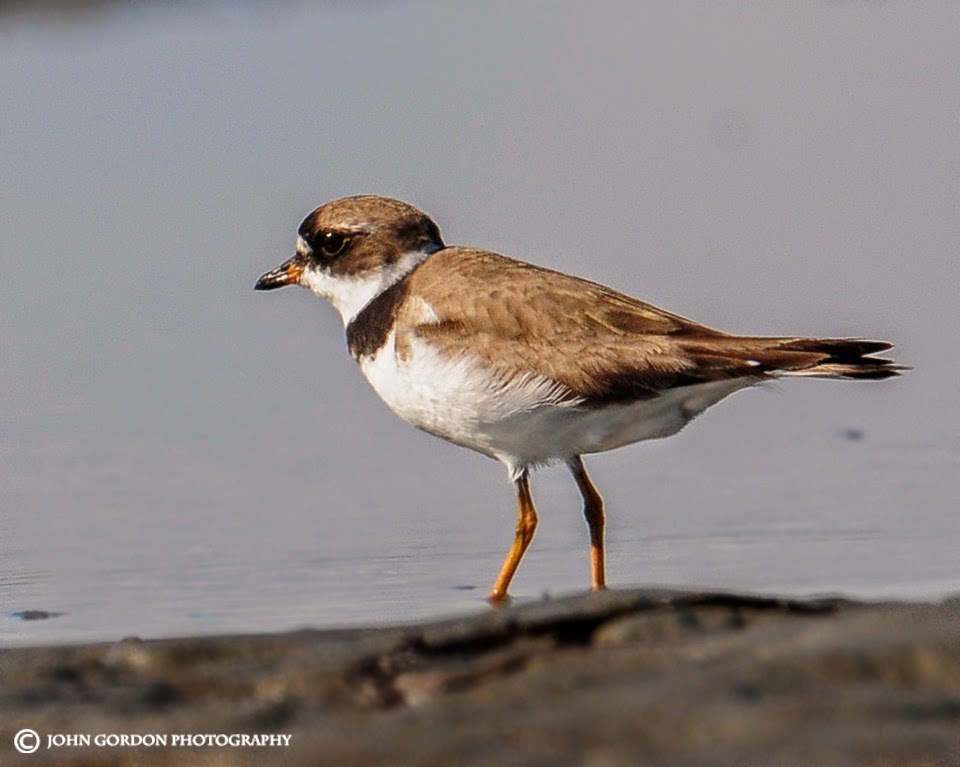According to my diary entry of exactly one year ago I photographed an American Kestrel at the base of Delta's 104 St. If I was to go down to 104 St exactly a year later during a promising flood tide what might I find ?
The Delta Air Park parking lot at the base of 104 St is always worth a look. Sometimes a Merlin perches in the tall tree by the dyke entrance and who remembers the Tropical Kingbird that turned up a couple years ago and stayed for weeks. Hundreds of birders took part in the resulting "Twitch"

Semipalmated Plover with ragworm.
Anyway, the tide was to be around 13.4 ft which meant it would just reach up to the dyke. I arrived two hours early to search the bay for migrating shorebirds. I took a while but eventually after walking a kilometre across the bay (there were no other birders around) I managed to find what seemed the only flock on the beach. It took me an hour or so to approach what turned out to be a flock of forty Semipalmated Plovers.
It took a while to gain their confidence as they scurried along the mud and sand, busily feeding on whatever lurked or was stranded in the small tidal pools left over from the last high water.

Western Sandpiper (Calidris mauri) in a mixed flock of Semipalmated Plover.
Eventually I managed to get the above shots. The plover below has captured what I think is a ragworm, note the pincers at the head. These worms were found at the edge of the water pools and appeared to be about thirty percent of the plover's catch.
As I photographed the flock I couldn't miss the affect passing light aircraft. Each time the plovers noticed the shadow and sound of a plane overhead they would in unison stop feeding, crouch down and essentially disappear from view.
As the plovers approached closer and closer my prone position became more and more uncomfortable, afraid to move so as not to spook the birds. Suddenly something frightened the flock and off they flew, finally giving me the chance to move my legs.

Western Sandpiper showing rufous colouring on the head and scapulars.
With the tide coming in the flock flew back to the same spot but this time they had brought about one hundred Western Sandpipers with them.
Watching them scurry across the sand, busily feeding on sand flies was an incredible sight. Their bright rufous upper scapulars shone in the late afternoon sun. It was a magical moment in a magical place.
It was good to get back to some birding after all the other events that had sidelined me recently. The previous day I had joined Gareth Pugh and others for a weekly visit (meet every Thursday 1 p.m at the pier) to Blackie Spit. Highlights amongst the 35 species noted included a fledgling Spotted Sandpiper (below) and a Western Tanager.

Juvenile Spotted Sandpiper (Actitis macularia)
All images D300s Nikon 500mm F4 with 1.4x converter except the Spotted Sandpiper which was the Tamron 150mm-600mm handheld from about 100 feet away.
John Gordon is a professional wildlife photographer who provides seminars and workshops. You can follow his blog here.



